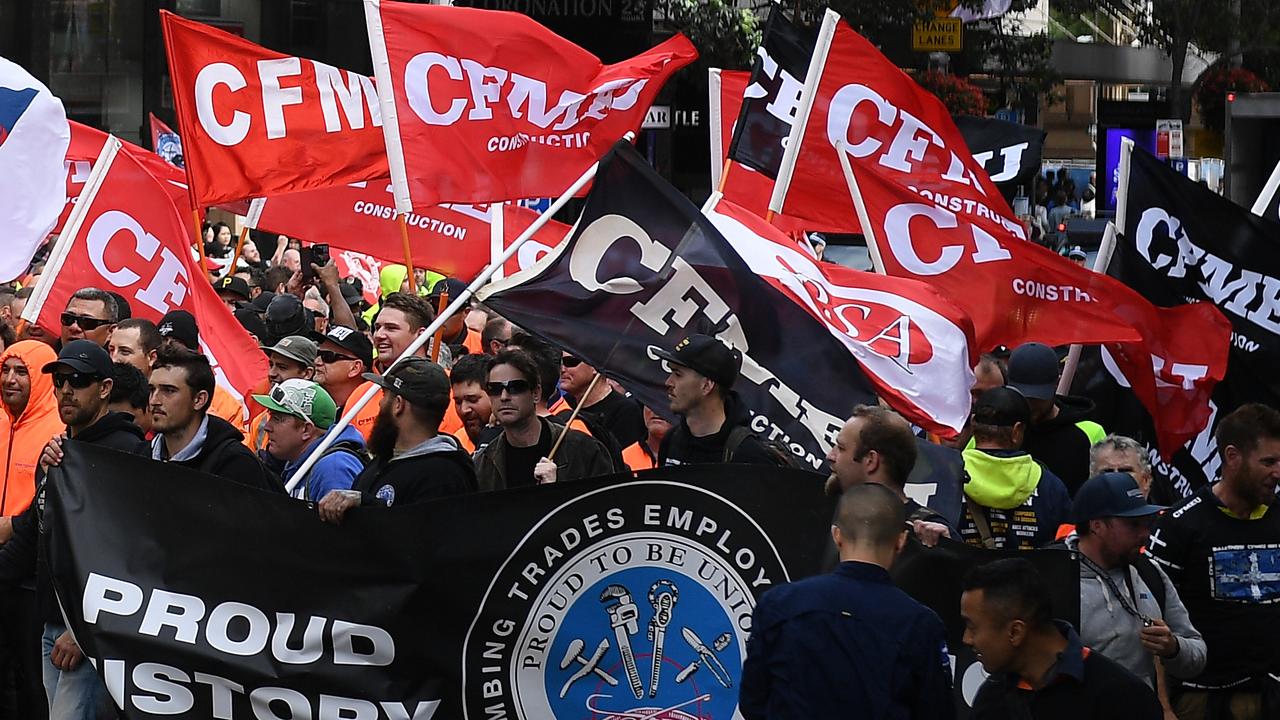Coalition achieves 2013 jobs promise early
The Coalition has lived up to its 2013 election promise to create one million new jobs, achieving the target four months early.

The Coalition has lived up to its 2013 election promise to create one million new jobs, achieving the target four months early.
But a rise in the share of working-age people in work or looking for it, especially women, pushed the unemployment rate to 5.6 per cent in April, the highest level in nine months, up from 5.5 per cent a month earlier.
The Prime Minister’s Office said average monthly jobs growth under Malcolm Turnbull had been 22,500, higher than under any other government since Bob Hawke’s administration.
Former prime minister Tony Abbott, who as opposition leader in 2013 promised to create one million jobs in five years and two million over a decade if the Coalition was elected, told The Australian yesterday:“It was always something I was confident we could achieve with a government that appreciated the role of private business in creating jobs and building prosperity.”
After shedding jobs in February and March, ending a 16-month stretch of continual rises that boosted employment by 415,000 last year alone, the economy added 23,000 workers in April, more than economists had expected. Almost 90 per cent of the 1.014 million extra jobs since September 2013 emerged in NSW, Victoria and Queensland, entrenching the economic divide between the big eastern states, which attract the lion’s share of immigration, and the rest.
More than 755,000 jobs were added in NSW and Victoria alone. Western Australia, with a population 40 per cent the size of Victoria’s, added only 29,000 jobs compared with the latter’s 363,000.
Mr Turnbull said: “This excellent result didn’t happen by accident. It’s the result of the hard work of Australian businesses supported by the government’s strong economic management.”
“We must continue to focus on building a strong economy to secure even more jobs,” Scott Morrison added.
Under the Rudd/Gillard government, the national workforce increased by 8.8 per cent over 70 months — the same jobs growth now achieved by the Abbott/Turnbull government in 55 months. Labor employment spokesman Brendan O’Connor said the global financial crisis of 2008 and 2009 had marred its record.
“Labor achievements — such as the NDIS and significant infrastructure investments — continue to be key drivers of increased employment in the economy,” Mr O’Connor said.
JPMorgan economist Tom Kennedy said the surge in employment growth was in large part due to a flurry of hiring in the healthcare and construction sectors, which together contributed more than half of last year’s total employment growth.
“With only about 30 per cent of potential users currently involved in the scheme, labour demand across the healthcare sector will likely need to increase through 2018,” Mr Kennedy said.
By state, unemployment rates in April ranged from 6.5 per cent in Queensland and Western Australia to 5.3 per cent in Victoria and 5 per cent in NSW.
For the first time, employment has increased above 12.5 million as a result of a 33,000 rise in full-time jobs and a 10,000 fall in part-time jobs between March and April.
ABS chief economist Bruce Hockman said: “The (trend) labour force participation rate was the highest it has been since the series began in 1978, indicating increasing attachment to the labour force.”
The trend participation rate for women, 60.7 per cent, rose to a record high in March while that for men fell to 70.7 per cent, continuing its drift from a high of 79 per cent in the late 1970s.
The rise in the unemployment rate — the Reserve Bank’s preferred measure of the strength of the jobs market — dragged the Australian dollar down a little yesterday, as investors discounted the chance of an official interest rate increase.
National Australia Bank chief market economist Ivan Colhoun said: “I’m actually not sure the reported rise in unemployment can be believed, given how many other indicators are suggesting improving demand for labour and that unemployment should be declining.
“The big question is why the unemployment rate is not falling, given usually reliable indicators suggesting it should be, such as the number of SEEK job ads, our employment survey, and consumer unemployment expectations.”





To join the conversation, please log in. Don't have an account? Register
Join the conversation, you are commenting as Logout